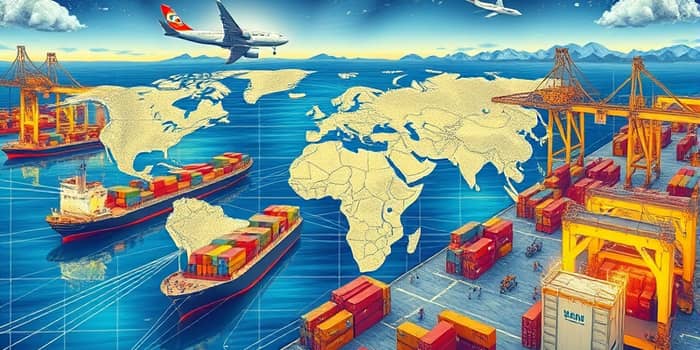
As trade policies stabilize and tariff barriers ease, global logistics providers are seizing unprecedented opportunities. From digital platforms to green corridors, companies are innovating to thrive in an evolving environment.
The summer of 2025 marks critical tariff deadlines in the United States. On July 9, most partners saw rates roll back from as high as 34% to a uniform 10%, with China’s reprieve extending until August 12. As talks intensify, businesses anticipate the possible rebound of duties into the 11 6% range, prompting a rush to import.
June 2025 witnessed a remarkable 22% spike in container shipments from non-China origins, as firms accelerated inventory intake to lock in lower rates. This surge congested U.S. ports, pushing container dwell times up 30% since April. Carriers rerouted vessels, and freight forwarders scrambled for alternative hubs to maintain seamless flows.
In response to regulatory volatility, many manufacturers and retailers have embraced supply chain resilience demands. Companies are diversifying suppliers, shifting volumes into favorable zones under new U.S. 6Japan and USMCA agreements, and away from high-tariff areas such as China.
North American trade has surged by nearly US$500 billion since USMCA’s enactment, exceeding US$1.57 trillion by 2023. To sustain growth, importers are investing in warehouses closer to end markets, reducing per-shipment customs scrutiny and mitigating sudden duty hikes.
Cross-border e-commerce players have felt the strain of changing de minimis thresholds, driving many to adopt overseas fulfillment centers. Large retailers with robust dropship models maintain agility by blending digital storefronts with local distribution.
The complexity of modern trade demands cutting-edge solutions. Logistics firms are integrating digital logistics management platforms that automate product classification, compliance documentation, and real-time tracking. These systems enhance accuracy and speed, crucial when tariff deadlines loom.
Automation in warehouses—from robotic pickers to AI-driven slotting—optimizes throughput and reduces labor gaps. With 2.1 million manufacturing roles projected unfilled by 2030, technology is alleviating workforce shortages and boosting operational resilience.
Blockchain and distributed ledger systems are also gaining traction for end-to-end supply chain visibility. By securing immutable transaction records, shippers and customs authorities can expedite clearances and cut processing times.
Environmental standards are no longer optional. Companies are embracing electric drayage trucks, rail intermodal shifts, and optimized route planning to lower carbon footprints. Governments and investors reward those with robust sustainability credentials, driving adoption of eco-friendly practices.
Green logistics is more than compliance; it’s a competitive edge. Consumers and B2B clients increasingly favor partners with transparent emissions reporting and circular packaging initiatives. This trend aligns with global incentives for critical minerals and clean-energy components.
Global third-party logistics providers with diversified routing options, advanced compliance capabilities, and automated warehousing stand to capture the bulk of growth. Their ability to pivot quickly—leveraging digital twins, predictive analytics, and robust risk management—differentiates them in a crowded field.
Large-scale importers and exporters with distributed warehousing capabilities are also advantaged, smoothing supply disruptions and maintaining service levels. By integrating customer data with demand forecasts, these firms optimize inventory turns and shrink holding costs.
Despite the current upswing, geopolitical tensions, climate events, and abrupt policy shifts remain formidable challenges. Seventy-six percent of European shippers reported disruptions in 2024, underscoring the volatility embedded in global trade.
Yet, trade normalization—reinforced by comprehensive agreements and tariff reprieves—ushers in a new era of growth and efficiency. Logistics providers that embrace digitalization, forge sustainable practices, and stay nimble will thrive as globalization enters its next chapter.
Ultimately, the companies that succeed will be those with a clear vision of integrated, resilient, and green supply chains—capable of turning regulatory complexity into competitive advantage.
References













